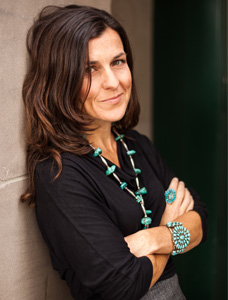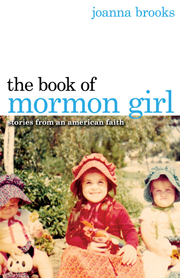It is daunting to look at the faith that you love and witness the accumulation of 183 years of non-systematic doctrinal accumulation. By which I mean that one of the downsides of not having a professional clergy is that Mormonism does not recognize a systematic, coherent theology. Yes, people. In this, I envy Catholics and Jews and other faiths who make space for professional theologians and scholars of theology trained in the discipline. I want a Mormon Jaroslav Pelikan. I want Mormon Jesuits. I really do.
What we have instead is an accretion of scriptures, historical events, personal experiences, and interpretive impulses–a chaotic body of data that is typically managed in order to tell the story the speaker wants it to tell. Every faith tradition has a theological history rich in chaos, and Mormonism is no exception. What we can see at best as we begin to piece together the history of thought on questions like “What is priesthood?” and “What is the relationship of gender to priesthood?” is the human outlines of our hunger for the truth and the way in which the terms of our search for the truth have evolved over time. Mormons call this process continuing revelation. The more we learn about change in Mormon history and doctrine and the more prepared we are to be candid, we must acknowledge that human dispositions and error play a vital role in shaping Mormon doctrinal history–especially on questions of power and its administration.
The problems come when we mistake human impulses and dispositions for Godly intentions and assume that what seems familiar and right to us is in fact essentially reflective of reality.
For example, we now hear a great deal of talk in connection with priesthood about gender complementarity–the idea that the spiritual work of mothering is the intended complement to priesthood offices. This idea is spoken as if it is gospel truth–self-evident.
But is there one scrap of evidence in A) canonized scripture B) canonized revelation C) the words of Jesus Christ or D) the words of Joseph Smith that supports the notion that motherhood is a spiritual office that is the complement of priesthood?
Because unless someone can find me this kind of evidence, candidly, I believe we have to set this whole notion aside as well-intentioned (and by some, deeply felt, but for others, deeply counter-experiential and nonsensical) folk doctrine. I am mindful that Valerie Hudson and other well-regarded scholars have put forward various accounts imagining the spiritual value of motherhood. But these have no foundation in doctrine and bear virtually no resemblance to the actual practices and values (aside from rhetorical) of the contemporary LDS Church. They are as fanciful and speculative as Orson Pratt’s 19th century ponderings that spirit children are conceived in a manner that mirrors earthly procreation. Fact is, we simply do not have a body of doctrine that establishes the role of gender in the plan of salvation. Pretty much everything we can say about Heavenly Mother–that she exists–is the product of post-1843 speculation confirmed only in retrospect by later prophets like Gordon B. Hinckley. We do not have evidence for Heavenly Mother in canonized scripture, canonized revelation, the words of Jesus Christ, or the words of Joseph Smith. Sad fact, but there it is. What we do have is the projection of familiar 19th century European-American assumptions about motherhood and gender (which are not universally held) onto the nature of God and eternity. We have speculation, not doctrine. We also have the use of the idea of complementarity as a rationale for excluding women from authority over the institutional, financial, political, and socio-cultural life of our community. Again, this is a strange permutation of the use of the term “complementarity,” as we note if we compare our experience in a Church where 19th century Euro-American gender norms rule to the way complementarity is understood and practiced in non-Euro-American societies. An indigenous Mormon reader of the column wrote in with this note:
[Lakota anthropologist] Bea Medicine and others define gender complementarity not only as recognizing gender differences, but, and this is important, sharing power and decision making. She observes, “The cultural mandates from symbolic and mythic structures did actually reflect duality and complementarity in economic and social roles” (Medicine 141).
We do not have duality and complementarity in Mormonism, except in our imaginations.
We must know what something is not in order to be able to understand what is.
This problem extends not only to the folk doctrine that has accumulated over the years to legitimate late 20th century gendered power segregation within LDS institutional life but to the way priesthood has been redefined in this time period to conflate administrative, ecclesiastical, ritual, spiritual, familial, and social offices. Another reader wrote this week with the same concern:
With all the commotion around priesthood ordination, I determined to start studying what priesthood really means and how it has been described since the restoration. I’m finding that definitions are very inconsistent! Sometimes it’s God’s authority in general, sometimes it’s his power broadly, sometimes it’s specific keys, etc. The church’s most recent “worldwide leadership training” on priesthood authority only confused me more, with quotes like “I use my priesthood keys to perceive and meet the needs of my quorum” (what? Isn’t that just the spirit? so bizarre). I’m finding that keys and authority are even ill-defined; what are keys, specifically? They’re talked about generally all the time, but what specific keys come with ordination to the Aaronic priesthood, and how are they supposed to be used? Anyway, I have determined to try and study it out more, because it’s hard to know where women fall in all this when it’s unclear what priesthood even means, how it relates to spiritual gifts, etc.
Exactly. What really counts as priesthood? Is healing the sick a priesthood office? Is managing the Church’s stock portfolios a priesthood office? Is presiding over a Church-owned university a priesthood office? Is saying a benediction a priesthood office? (It was classified as such during my lifetime.) Is serving on the High Council a priesthood office?
We must know what something is not in order to know what it is.
Okay, readers, next week we’ll start in on some readings. But for now, I leave you with a couple of questions:
1. Can anyone find evidence in A) canonized scripture B) canonized revelation C) the words of Jesus Christ or D) the words of Joseph Smith that indicates the value of gender roles in the plan of salvation? (And yes, we all know that temple marriage is required for exaltation–but marriage does not necessarily mean gender roles.)
2. How can we know what really counts as priesthood? Which of the functions we group under the broad umbrella term “priesthood” now are really priesthood-limited responsibilities?
Send your thoughts to askmormongirl@gmail.com, or follow @askmormongirl on Twitter.







